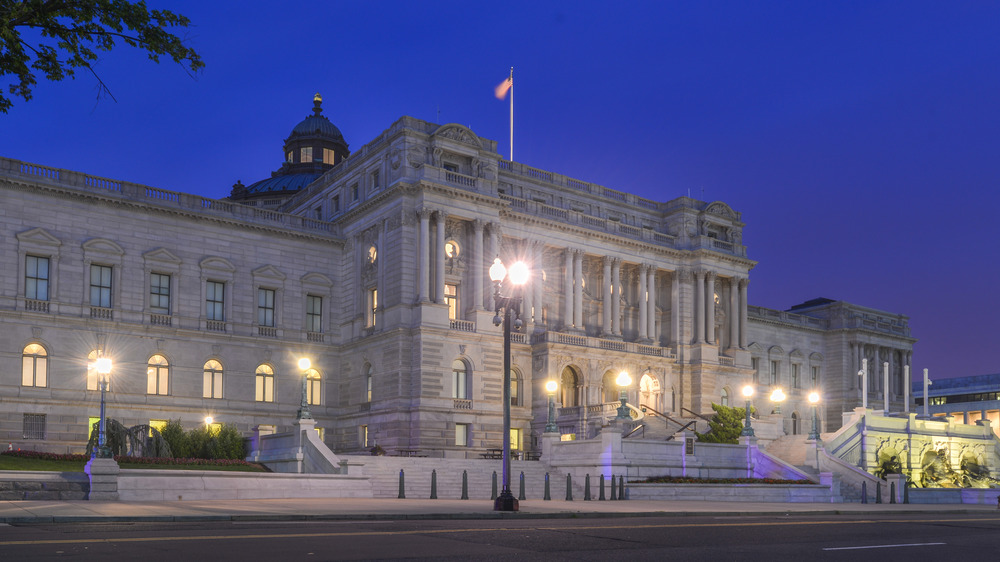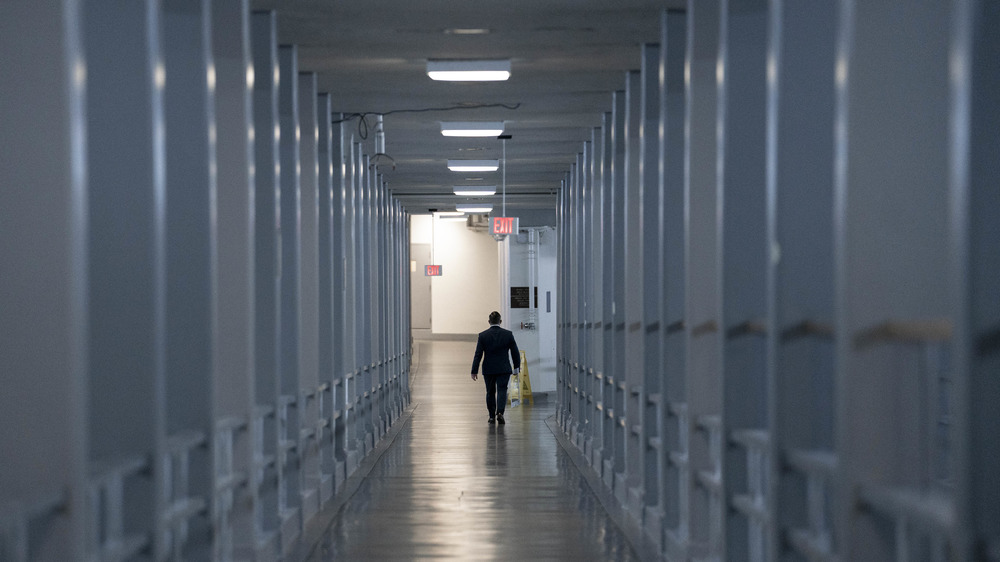What You Didn't Know About The Tunnel System Inside The Library Of Congress
The Library of Congress, founded in 1800, has served as a repository of knowledge for U.S. presidents from John Adams to Donald Trump. In today's digital age, it seems hard to imagine a time when politicians didn't have all the information they desired at the tip of their fingers, but in the 1800s, presidents, congressmen, and their staff would consult books to find the data they were looking for. To ensure all the information they could need would be readily available to them, the original Congressional Library was established inside the Capitol.
However, this first Congressional Library could only hold so much information, and by 1897, the collection had outgrown its allotted space. The library was soon forced to move into a bigger building on First Street, across from the Capitol. While the new building could accommodate more books than ever, Congress members worried that the move would delay necessary books from reaching the Capitol. To avoid this, they commissioned a tunnel system "with suitable conveying apparatus for the rapid transmission of books, papers, and messages at all times," as explained by the Office of the Historian.
Today the Library of Congress tunnels are mainly used as a pedestrian walkway
The finished product was six feet high and a quarter of a mile long. The Congressional Library tunnels were complete with built-in telephone wires and rails running along the walls, which transported pneumatic tubes of books and documents back and forth from the Capitol to the library.
Of course, as the internet became more commonplace, the need for a library book rapid-delivery system greatly diminished, and the tunnels eventually became outdated. After over a century, the subterranean pathway was demolished during the construction of the Capitol Visitor Center in the early 2000s.
But the tunnels didn't disappear entirely. Instead, an underground pedestrian walkway was established, connecting the Library of Congress to the Capitol. These days, the tunnels are mostly used by staff and their guests to easily access the adjoining buildings, although they are sometimes used to transport moving equipment as well, according to Untapped New York. To avoid any confusion, the paths for pedestrians and machines are clearly marked.

